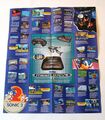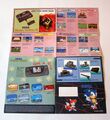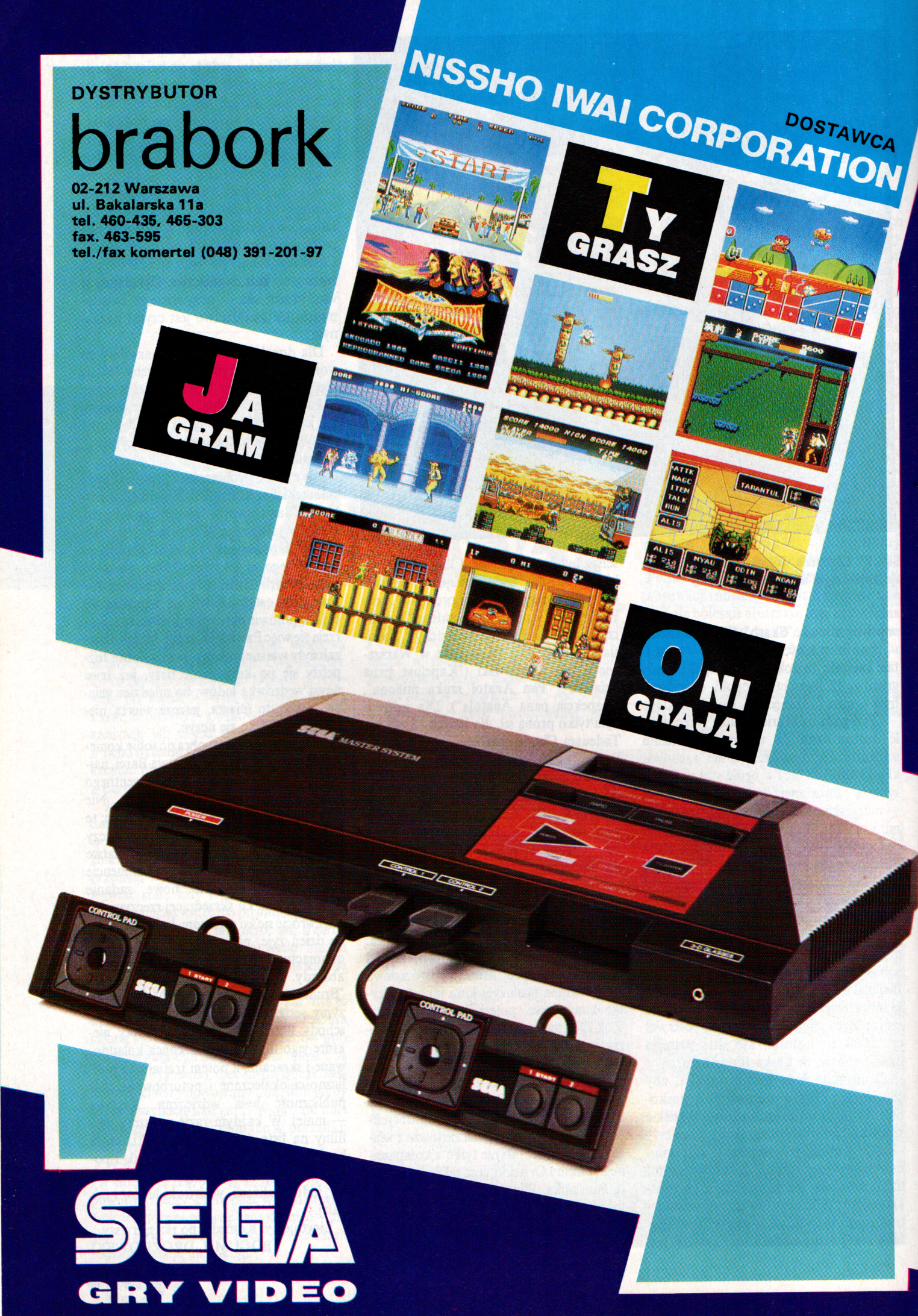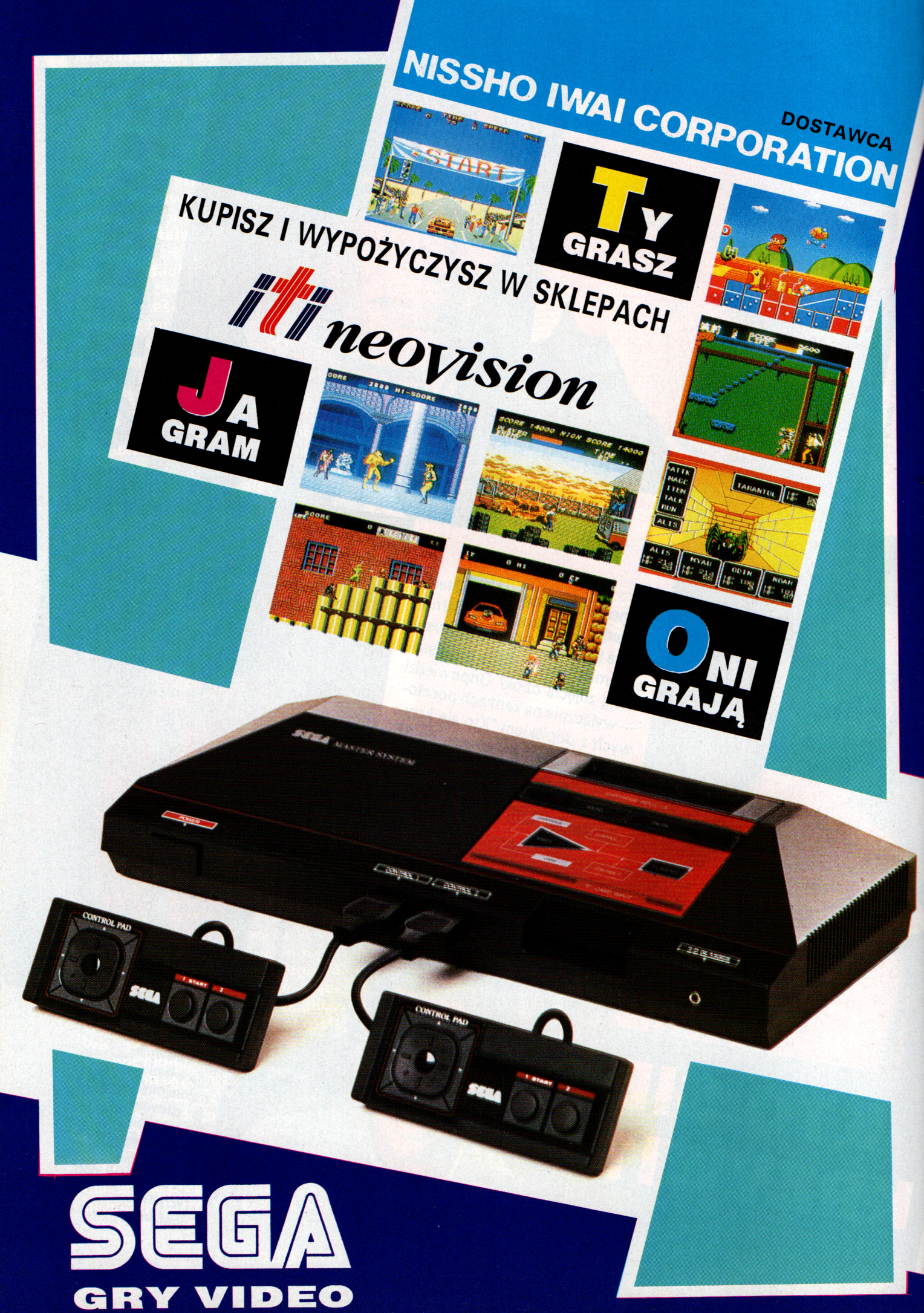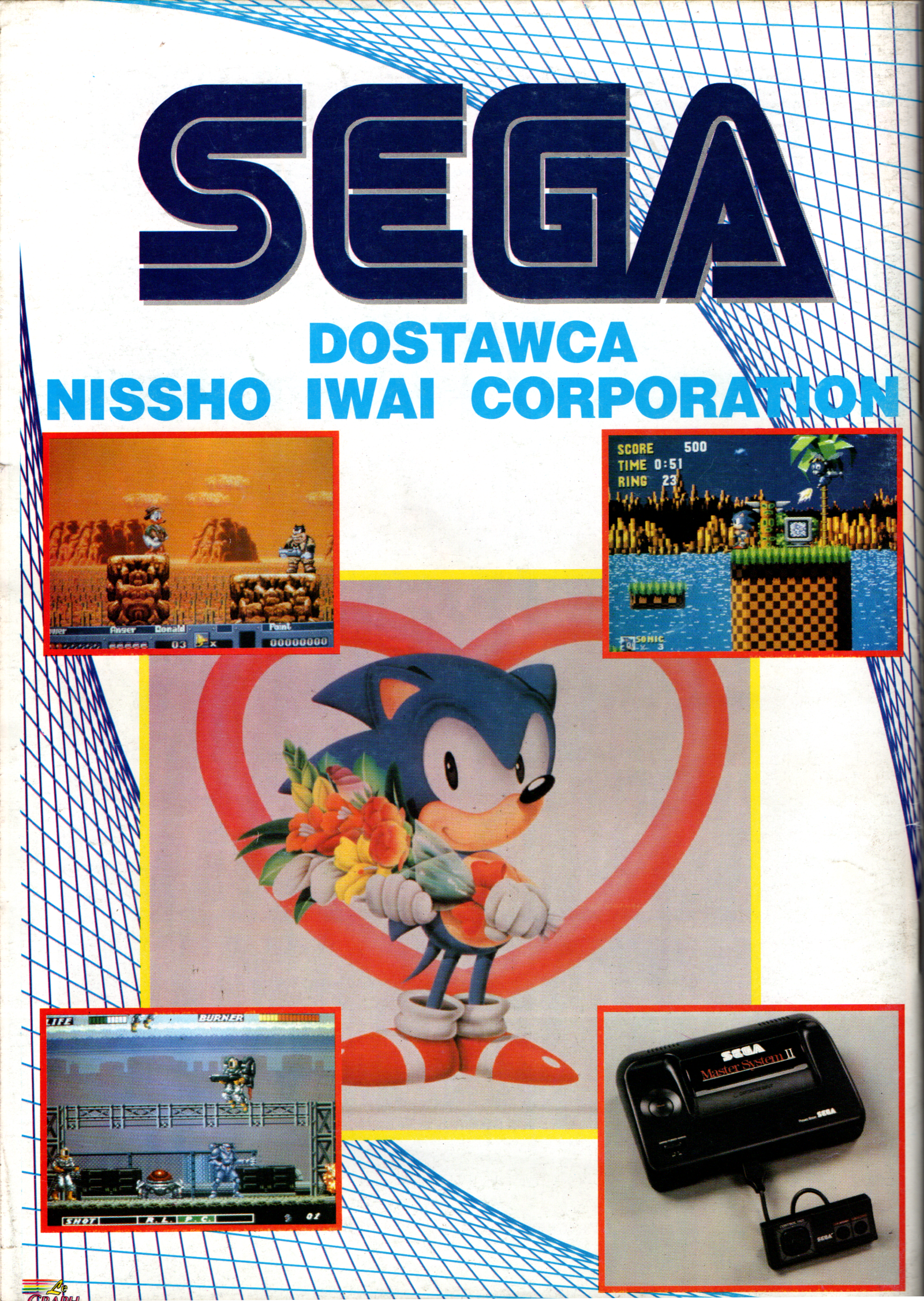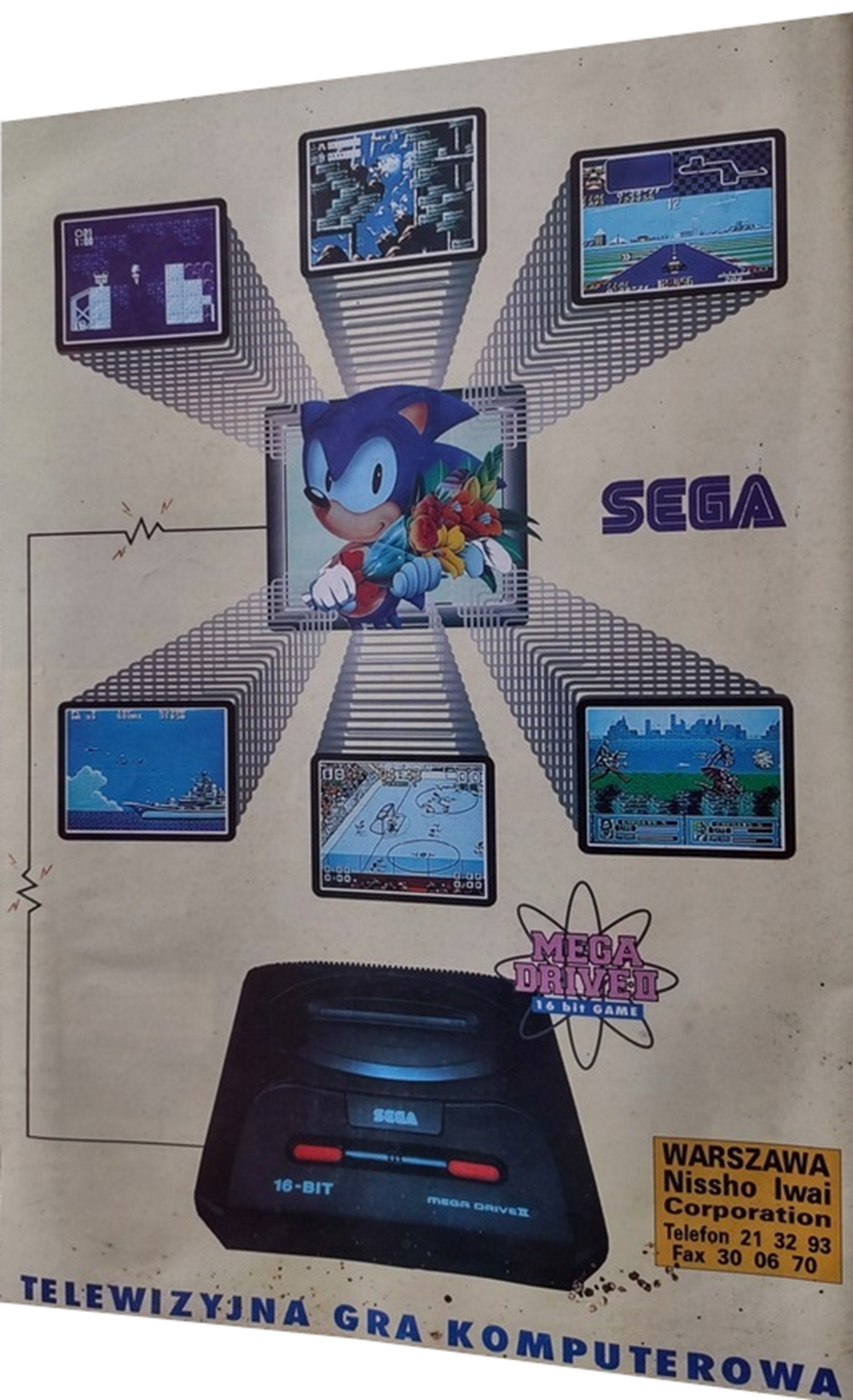Difference between revisions of "Nissho Iwai"
From Sega Retro
| Line 16: | Line 16: | ||
Despite the strategy, Sega games under Nissho Iwai achieved some success in the Eastern Bloc, where cheaper Sega consoles overtook more expensive Nintendo in sales. Nintendo was distributed in Eastern Europe by Stadlbauer Marketing, an Austrian company which handled distribution in Czechia, Slovakia, Hungary, Romania, Poland, former SFRY, former USSR and by office of Itochu Corporation, which handled Albania, Macedonia, Bulgaria. Mega Drive was the leader in most countries, although far behind the most popular gaming systems - Famiclones, and in the last period struggling with 16-bit Sega clones. However, according to Sega, the profits could be much higher and the brand more recognizable and more resistant to clones, if Nissho Iwai would use other strategy. On the opposite side, in Latin America, where Nintendo was distributed by Itochu Corporation, [[Super Nintendo]] was doing much better than Sega Genesis. | Despite the strategy, Sega games under Nissho Iwai achieved some success in the Eastern Bloc, where cheaper Sega consoles overtook more expensive Nintendo in sales. Nintendo was distributed in Eastern Europe by Stadlbauer Marketing, an Austrian company which handled distribution in Czechia, Slovakia, Hungary, Romania, Poland, former SFRY, former USSR and by office of Itochu Corporation, which handled Albania, Macedonia, Bulgaria. Mega Drive was the leader in most countries, although far behind the most popular gaming systems - Famiclones, and in the last period struggling with 16-bit Sega clones. However, according to Sega, the profits could be much higher and the brand more recognizable and more resistant to clones, if Nissho Iwai would use other strategy. On the opposite side, in Latin America, where Nintendo was distributed by Itochu Corporation, [[Super Nintendo]] was doing much better than Sega Genesis. | ||
| − | Nissho Iwai is also notable for assisting [[Sega]] with development of the early internet gameplay service [[XBAND]]. | + | In early 1994, they got exclusive distribution rights to sell [[Logic3]] accessories in Japan<ref>https://archive.org/details/TopSecret25/page/n32/mode/1up</ref>. |
| + | |||
| + | Nissho Iwai is also notable for assisting [[Sega]] with development of the early internet gameplay service [[XBAND]]<ref>https://www.latimes.com/archives/la-xpm-1996-07-29-fi-29177-story.html</ref>. | ||
In 2004, Nissho Iwai and fellow trading company Nichimen Co., Ltd. (ニチメン株式会社) merged to form [[wikipedia:Sojitz|Sojitz Co., Ltd.]] (双日株式会社). | In 2004, Nissho Iwai and fellow trading company Nichimen Co., Ltd. (ニチメン株式会社) merged to form [[wikipedia:Sojitz|Sojitz Co., Ltd.]] (双日株式会社). | ||
Latest revision as of 17:03, 3 January 2025

| ||
| Nissho Iwai | ||
|---|---|---|
| Founded: 1968[1] | ||
| Defunct: 2004 | ||
| Merged with: Nichimen Co., Ltd. | ||
| Merged into: Sojitz Co., Ltd | ||
Headquarters:
|
This short article is in need of work. You can help Sega Retro by adding to it.
Nissho Iwai Co., Ltd. (日商岩井株式会社) or Nissho Iwai Trading House was a Japanese trading company, electronics manufacturer, and video game distributor. It's computer division was known as Nissho Iwai Infocom.
Contents
History
Nissho Iwai was created in 1968 in Japan. Soon, the company began operating on all continents, dealing with industries such as metals, machinery, information, construction, realty services, energy, chemicals, precious metals, finances, foods, textiles and general commodities[2]. Due to the last one, Nissho Iwai Europe Plc. was appointed by Sega in 1990 as exclusive distributor of products in some of the Eastern European countries. The company had experience in sales in that region, due to the fact that it was one of the few foreign companies that were allowed by communist governments, to trade Western goods[3].
However, in late 1993, Sega of Japan gave full license for all Eastern Bloc countries to Nissho Iwai, which meaned replacing Sega Europe in that region. Japanese trading house began to appointing exclusive sub-distributors for every territories[4]. They also had contract for other regions were Sega wasn't distributing video games directly like Latin America (besides 4 countries of Mercosur where Sega had Tec Toy). Sub-distributors strategy damaged potential of Sega in the regions because distributors weren't prepared to invest in Sega's marketing, knowing that they would share benefits with other sub-distributors. In mid-1995 (likely between August-October 1995), contract with Sega of Japan experienced and license was given back to regional distributors like Sega Europe in Eastern Europe or Sega of America in South America, which began to rebuilding of distribution network using only the most effective and experienced former sub-distributors[4].
Despite the strategy, Sega games under Nissho Iwai achieved some success in the Eastern Bloc, where cheaper Sega consoles overtook more expensive Nintendo in sales. Nintendo was distributed in Eastern Europe by Stadlbauer Marketing, an Austrian company which handled distribution in Czechia, Slovakia, Hungary, Romania, Poland, former SFRY, former USSR and by office of Itochu Corporation, which handled Albania, Macedonia, Bulgaria. Mega Drive was the leader in most countries, although far behind the most popular gaming systems - Famiclones, and in the last period struggling with 16-bit Sega clones. However, according to Sega, the profits could be much higher and the brand more recognizable and more resistant to clones, if Nissho Iwai would use other strategy. On the opposite side, in Latin America, where Nintendo was distributed by Itochu Corporation, Super Nintendo was doing much better than Sega Genesis.
In early 1994, they got exclusive distribution rights to sell Logic3 accessories in Japan[5].
Nissho Iwai is also notable for assisting Sega with development of the early internet gameplay service XBAND[6].
In 2004, Nissho Iwai and fellow trading company Nichimen Co., Ltd. (ニチメン株式会社) merged to form Sojitz Co., Ltd. (双日株式会社).
Softography
Promotional material
Since the European branch of Nissho Iwai had three representative offices in Eastern Europe - Hungarian, Polish and Russian/CIS, these divisions created special promotional materials. In other countries of the region, sub-distributors created materials on their own and these are not listed here.
Manuals
Posters
Poster-catalog added to Mega Drive in Hungarian, Russian and Polish.
Adverts
- Video Club (PL) #19: "04/1992" (1992-xx-xx)
- Video Club (PL) #21: "06/1992" (1992-xx-xx)
- Video Club (PL) #22: "07-08/1992" (1992-xx-xx)
- Video Club (PL) #23: "09/1992" (1992-xx-xx)
- Video Club (PL) #24: "10/1992" (1992-xx-xx)
- Video Club (PL) #25: "11/1992" (1992-xx-xx)
- Video Club (PL) #30: "03/1993" (1993-xx-xx)
- Video Club (PL) #31: "04/1993" (1993-xx-xx)
- Video Club (PL) #32: "05/1993" (1993-xx-xx)
also published in:
- Video Club (PL) #37: "10/1993" (1993-xx-xx)
- Video Club (PL) #38: "11/1993" (1993-xx-xx)
- Video Club (PL) #39: "12/1993" (1993-xx-xx)
External links
- Official website (Sojitz) (Japanese)
References
- ↑ https://www.sojitz.com/history/en/company/nisshoiwai/
- ↑ https://web.archive.org/web/19961112111731/http://www.nisshoiwai.co.jp/nic/company/docs/E-01.html
- ↑ https://iauto.warszawa.pl/pierwsza-toyota-w-polsce/
- ↑ 4.0 4.1 File:CTW_UK_586_Europe_Supplement.pdf, page 3
- ↑ https://archive.org/details/TopSecret25/page/n32/mode/1up
- ↑ https://www.latimes.com/archives/la-xpm-1996-07-29-fi-29177-story.html
- ↑ Seen at Playbox 96 event on the left side of the photo [1]
- ↑ Seen at Playbox 96 event on the left side of the photo [2]






